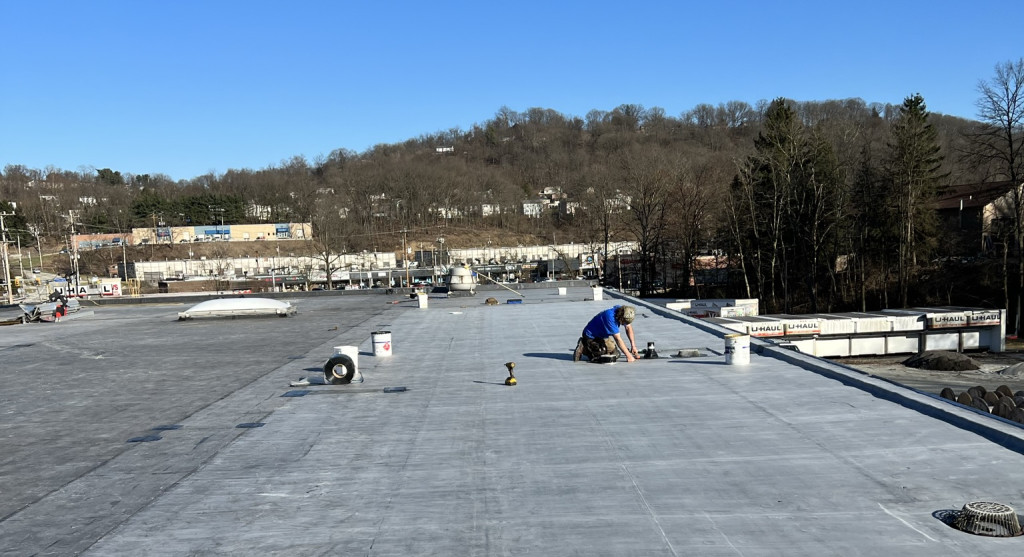
Rubber roofing, specifically in the form of EPDM (ethylene propylene diene terpolymer) membrane, has gained prominence as a reliable and versatile material for flat roofs in both residential and commercial settings. This durable synthetic rubber membrane offers a range of benefits that make it an attractive choice for both residential and commercial buildings.
Rubber roofing exhibits noteworthy advantages that make it a compelling choice for flat roofs. One of its key attributes is durability, as EPDM roofing demonstrates resilience against harsh weather conditions, ultraviolet (UV) exposure, and temperature fluctuations. This durability translates into an extended lifespan and reduced maintenance requirements, contributing to its cost-effectiveness over time.
Water resistance is another notable pro of rubber roofing on flat surfaces. Flat roofs are susceptible to water pooling, and the seamless installation of EPDM membranes minimizes the risk of leaks, providing effective protection against water damage. This characteristic is particularly valuable in regions with heavy rainfall or inclement weather.
Flexibility is a crucial feature, especially for flat roofs prone to expansion and contraction due to temperature variations. Rubber roofing adapts to these movements without compromising its structural integrity, mitigating the risk of cracks and leaks over time. The ease of installation on flat surfaces further enhances its practicality, potentially reducing labor costs and construction timelines.
In terms of energy efficiency, rubber roofing reflects a significant portion of the sun’s rays. This reflective property aids in regulating indoor temperatures, especially in warmer climates, contributing to lower cooling costs for buildings with flat roofs. The energy-efficient aspect aligns with contemporary sustainability trends, making rubber roofing an environmentally conscious choice.
However, like any roofing material, rubber roofing on flat roofs has its cons. Puncture risk is a notable concern, as sharp objects or debris may compromise the integrity of the rubber membrane. While regular maintenance and avoiding unnecessary foot traffic on the roof can mitigate this risk, it remains an aspect that requires consideration.
Aesthetic limitations may also be a consideration for some homeowners or business owners. The appearance of rubber roofing may be perceived as less visually appealing compared to other materials. Nevertheless, advancements in technology have led to more aesthetically pleasing options, offering a range of colors and textures to suit diverse preferences.
Cost considerations are another factor to weigh. The initial cost of rubber roofing materials may be higher than some traditional options. However, it is essential to view this investment in the context of long-term savings associated with durability, energy efficiency, and low maintenance.
Rubber roofing on flat roofs presents a compelling option for both homes and businesses, offering a balance of durability, water resistance, flexibility, and energy efficiency. While factors such as puncture risk, aesthetics, initial costs, and temperature sensitivity warrant consideration, the overall benefits often outweigh these drawbacks. Making an informed decision requires a careful assessment of specific needs, local climate conditions, and budget constraints. Consulting with experienced roofing professionals can provide valuable insights, ensuring that the chosen roofing solution aligns seamlessly with the unique requirements of the property.
